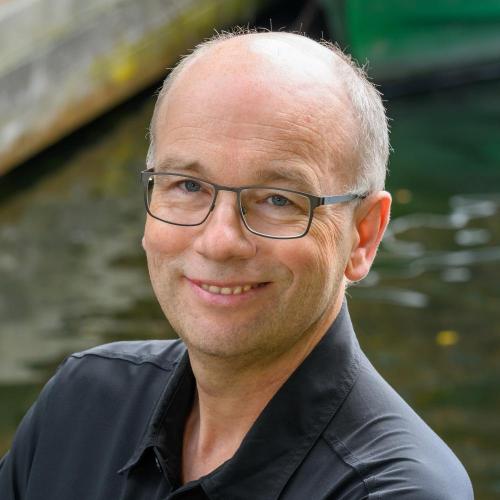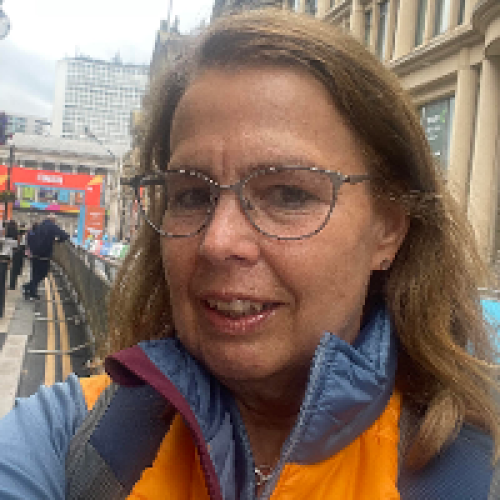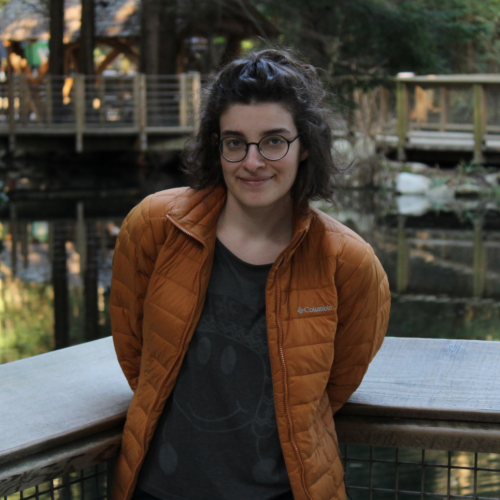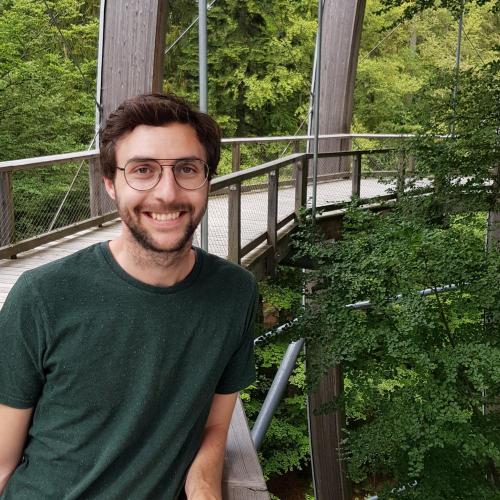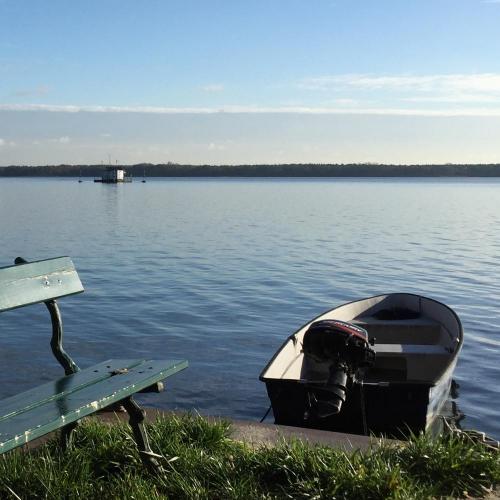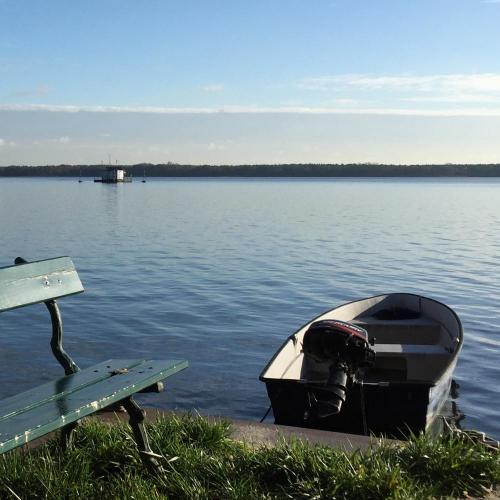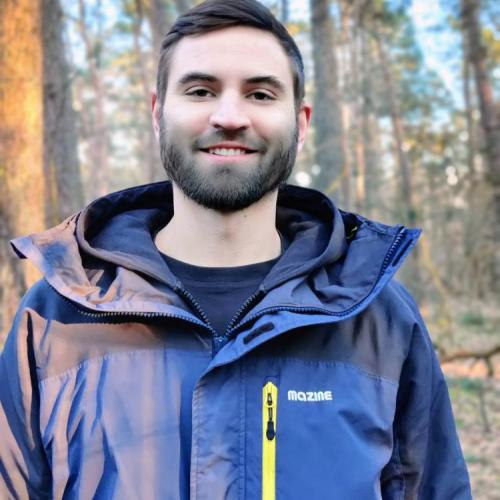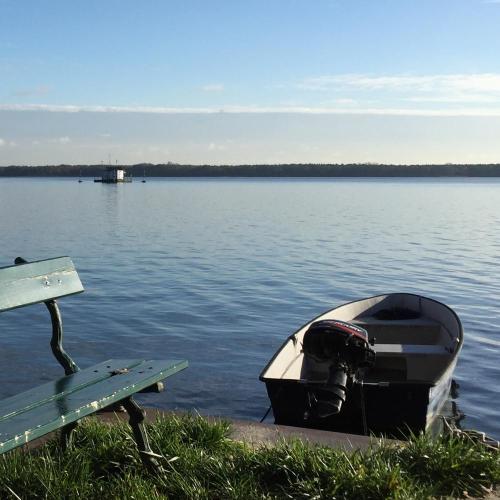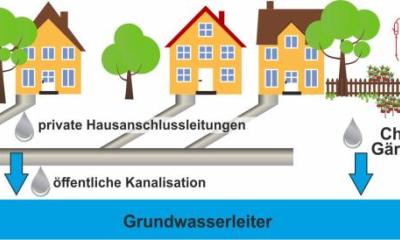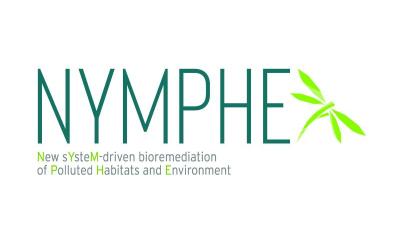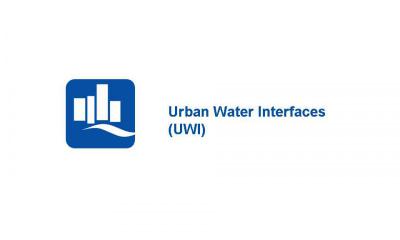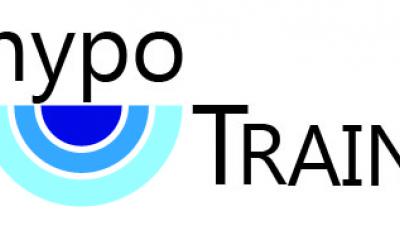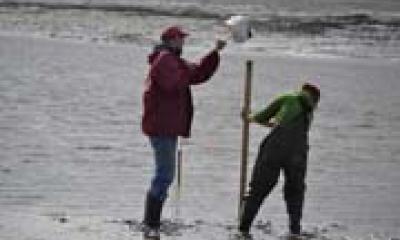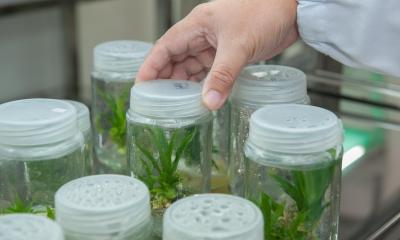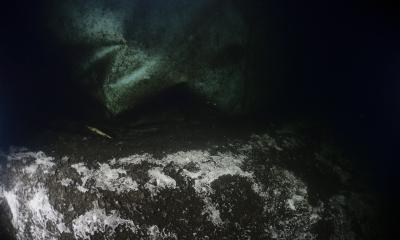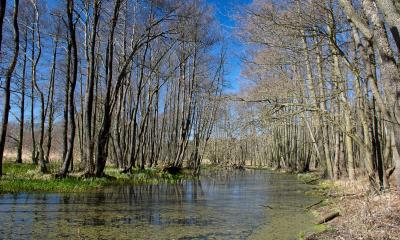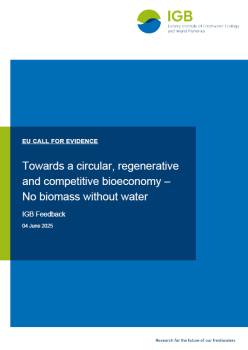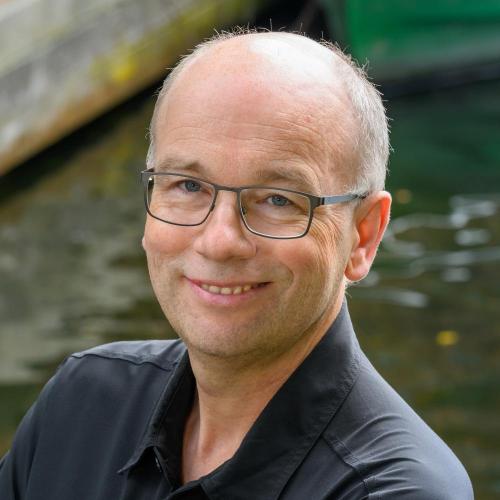
Groundwater-Surface Water Interactions

Group profile
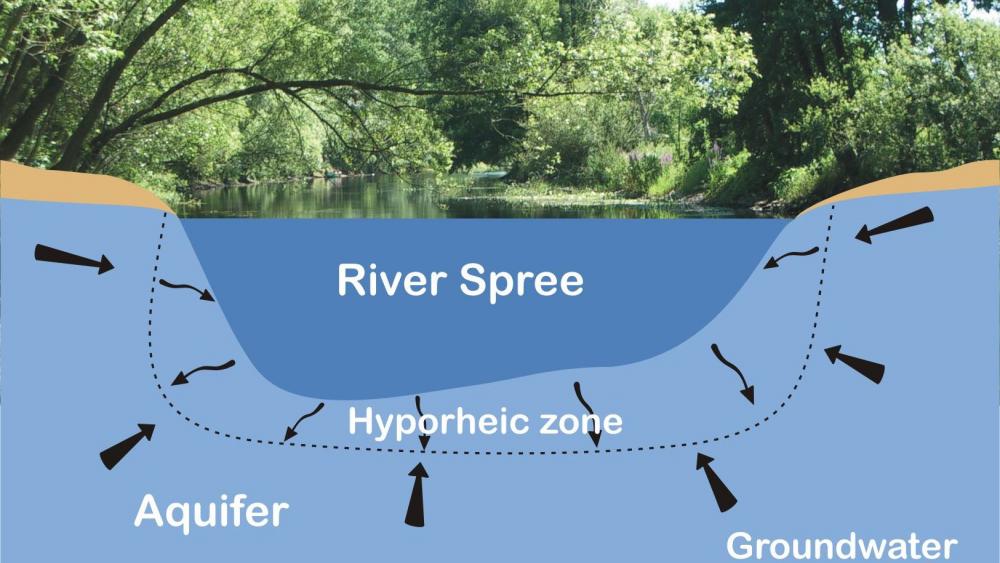
Hyporheic zone. | Image: Jörg Lewandowski / IGB
Our research focuses on ecohydrological processes at interfaces between aquifers and surface water bodies. Due to the mixing of these two different types of water bodies, steep biogeochemical gradients characterize the mixing zone and allow a variety of processes along these gradients. We investigate hydrological transport processes, biogeochemical turnover and the close coupling of these processes at the interface.
Our overall objective is to improve the understanding of ecohydrological processes at interfaces in order to provide a scientific basis for the restoration of rivers and lakes and to support decision-making in water management. We carry out field, laboratory and modelling studies. One focus is on the development and application of innovative measurement techniques.
Figure: Sampling of pore water at the side channel "Rechter Randgraben" of the River Erpe, Berlin/Brandenburg, to study hyporheic flow paths and biogeochemical processes along them. | Image: Birgit Maria Müller / IGB
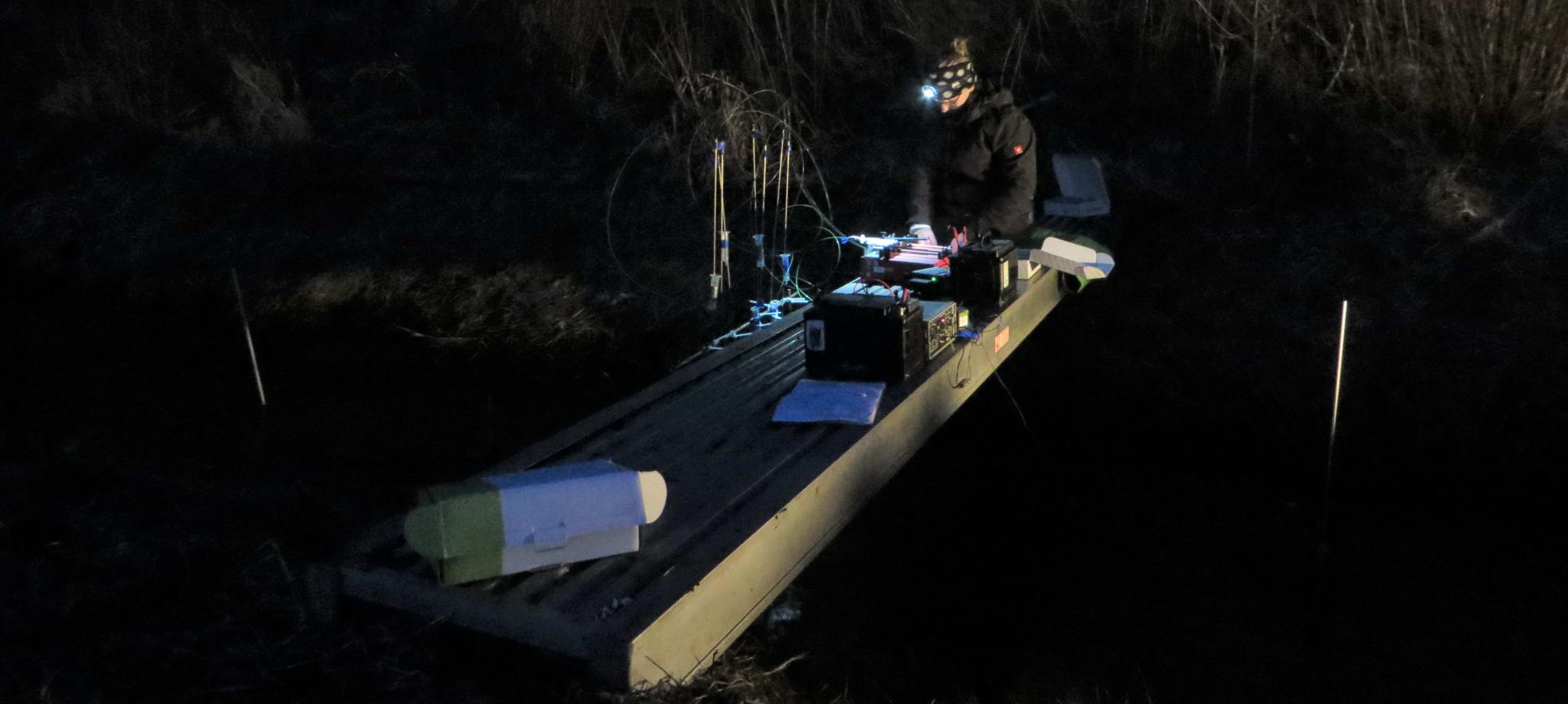
Figure: Push-pull tracer tests in the hyporheic zone of the side channel "Rechter Randgraben" of the River Erpe, Berlin/Brandenburg. Conducting the tests several times a day enables us to disentangle the influence of daily discharge fluctuations on the microbial activity in the hyporheic zone (Project Euroflow) | Image: Birgit Maria Müller / IGB
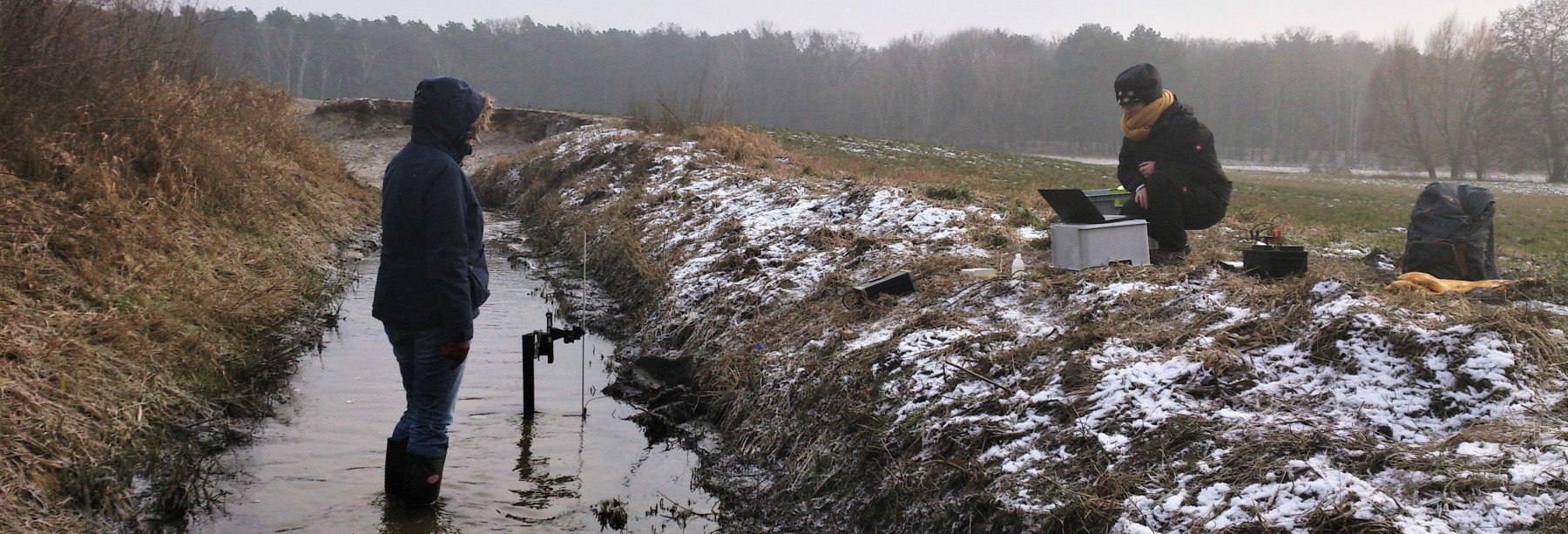
Figure: Measurement of an oxygen depth profile in the hyporheic zone with a micro sensor (side channel "Rechter Randgraben" of the River Erpe, Berlin/Brandenburg) | Image: Birgit Maria Müller / IGB
Figure: Measurement with a heat pulse sensor in the Hammer Stream, UK (Project Leverhulme) | Image: Jörg Lewandowski / IGB
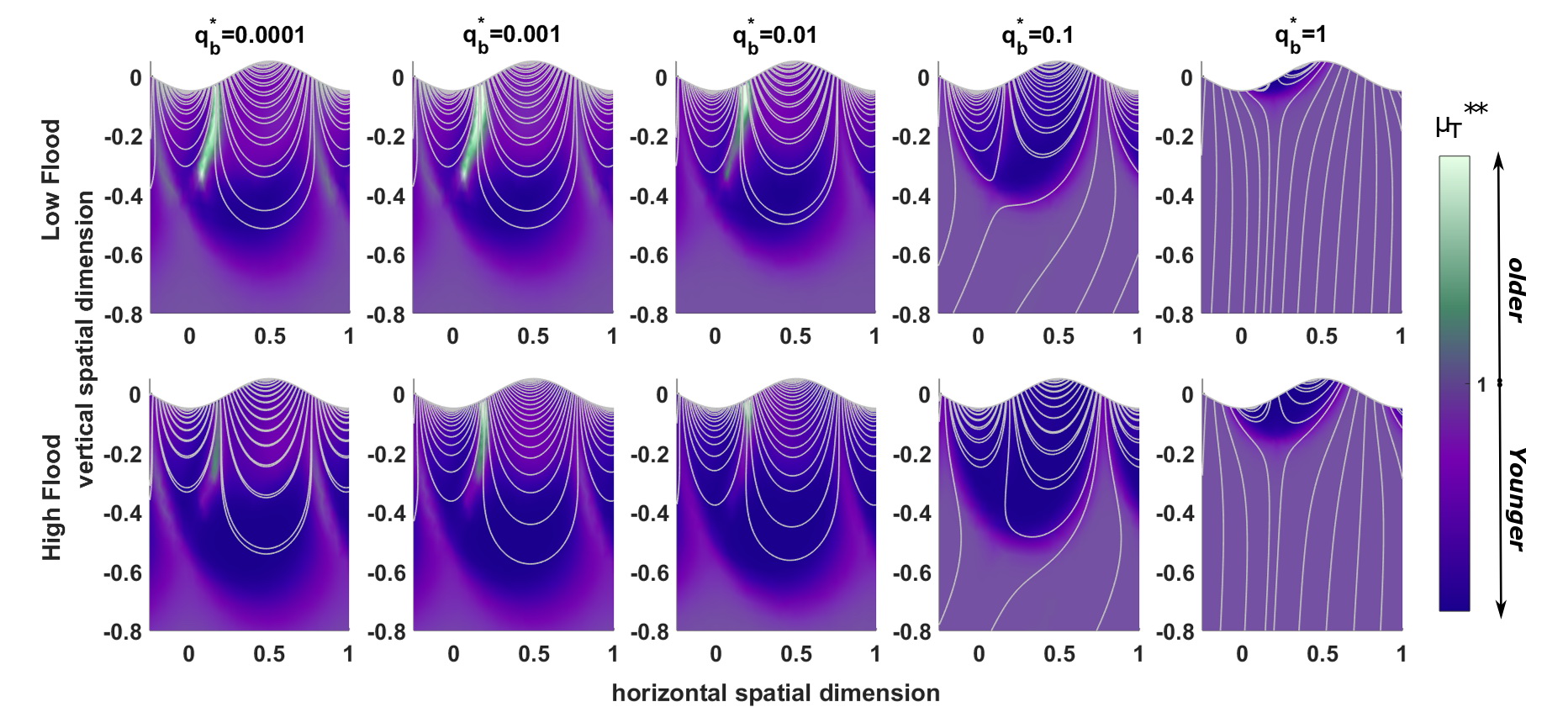 Figure: Modelling result for the relative age of the water in hyporheic zones under low flood (first row) and high flood events (second row) with increasing groundwater upwelling fluxes (from column one to five). | Source: Wu, L.; Singh, T.; Gomez-Velez, J.; Nützmann, G.; Wörman, A.; Krause, S. and Lewandowski, J. (2018). Impact of dynamically changing discharge on hyporheic exchange processes under gaining and losing groundwater conditions. Water Resources Research, 54, 10,076–10,093.
Figure: Modelling result for the relative age of the water in hyporheic zones under low flood (first row) and high flood events (second row) with increasing groundwater upwelling fluxes (from column one to five). | Source: Wu, L.; Singh, T.; Gomez-Velez, J.; Nützmann, G.; Wörman, A.; Krause, S. and Lewandowski, J. (2018). Impact of dynamically changing discharge on hyporheic exchange processes under gaining and losing groundwater conditions. Water Resources Research, 54, 10,076–10,093.
Movie: Column experiment with trace organic compounds and benthic organisms | Film: Anna Lena Kronsbein / IGB
Movie: IGB field work at the River Erpe in Berlin/Brandenburg | Film: Hanna Schulz & Birgit Maria Müller / IGB
We study three different types of groundwater-surface water interfaces:
- Currently the main research focus is on so-called hyporheic zones (streambed, i.e. interface between stream and aquifer). We consider the hyporheic zone as a natural, hydrodynamically driven bioreactor responsible for the impressive self-purification capacity of streams regarding nutrients (phosphorus, nitrogen, and carbon) and organic trace compounds (e.g. pharmaceuticals). Sometimes is is also called a river's liver. More in this podcast (in German):

Selected Publications:
Schulz et al. (2024). Respiration and CO2 evasion dynamics in moving streambeds as a response to flow regimes. Journal of Hydrology 640, 131559.
Schaper et al. (2024). Electrical conductivity fluctuations as a tracer to determine time-dependent transport characteristics in hyporheic sediments. Journal of Hydrology 643, 131914.
Schulz et al. (2023). Moving bedforms control CO2 production and distribution in sandy river sediments. Journal of Geophysical Research – Biogeosciences 128, e2022JG007156.
Jaeger et al. (2023). Time series of electrical conductivity fluctuations give insights into long-term solute transport dynamics of an urban stream. Water Resources Research 59, e2022WR034203.
Reith et al. (2023): Attenuation of trace organic compounds along hyporheic flow paths in a lowland sandbed stream. Journal of Hydrology 624, 129905.
Höhne et al. (2022): Fate of trace organic compounds in the hyporheic zone: Influence of microbial metabolism. Water Research 224, 119056.
Mueller et al. (2022): Seasonal differences in the attenuation of polar trace organics in the hyporheic zone of an urban stream. Water Resources Research58, e2021WR031272.
Schaper et al. (2022): Spatial variability of radon production rates in an alluvial aquifer affects travel time estimates of groundwater originating from a losing stream. Water Resources Research 58, e2021WR030635.
Höhne et al. (2021): A novel device for in situ point measurements of fluorescent tracers in sediment pore water. Advances in Water Resources 148, 103827.
Müller et al. (2021): Simultaneous attenuation of trace organics and change in organic matter composition in the hyporheic zone of urban streams. Scientific Reports 11, 4179.
Wu et al. (2021): How daily groundwater table drawdown affects the diel rhythm of hyporheic exchange? Hydrology and Earth System Science 25, 1905-1921.
Jaeger et al. (2021): Transformation of organic micropollutants along hyporheic flow in bedforms of river-simulating flumes. Scientific Reports 11, 13034.
Höhne et al. (2021): Determining hyporheic removal rates of trace organic compounds using non-parametric conservative transport with multiple sorption models. Water Research 206, 117750.
Wolke et al. (2020): Impact of bed form celerity on oxygen dynamics in the hyporheic zone. Water 12, 62.
Wu et al. (2020): Impact of flow alteration and temperature variability on hyporheic exchange. Water Resources Research 56, e2019WR026225.
Galloway et al. (2019): The effect of unsteady streamflow and stream-groundwater interactions on oxygen consumption in a sandy streambed. Scientific Reports 9, 19735.
Gaona et al. (2019): Identification of groundwater exfiltration, interflow discharge and hyporheic exchange flows by fiber-optic distributed temperature sensing supported by electromagnetic induction geophysics. Hydrological Processes 33, 1390-1402.
Jäger et al. (2019): Spatial and temporal variability in attenuation of polar trace organic compounds in an urban lowland stream. Environmental Science & Technology 53, 2383-2395.
Schaper et al. (2019): Fate of trace organic compounds in the hyporheic zone: influence of retardation, the benthic biolayer and organic carbon. Environmental Science & Technology 53, 4224-4234.
Jäger et al. (2019): Using recirculating flumes and a response surface model to investigate the role of hyporheic exchange and bacterial diversity on micropollutant half-lives. Environmental Science: Processes & Impacts 29, 2093-2108.
Lewandowski et al. (2019): Is the hyporheic zone relevant beyond the scientific community? Water 11, 2230.
Figure: Our main study site for the hyporheic zone is the River Erpe, Berlin/Brandenburg. It receives treated wastewater from the Münchehofe sewage plant, which accounts for up to 80% of the river water | Image: Birgit Maria Müller / IGB
Figure: Studying groundwater-stream interactions and the fate of wastewater-borne pharamaceuticals in the River Erpe, Berlin/Brandenburg (Projects UWI and HypoTRAIN) | Image: Jörg Lewandowski / IGB
- Other research of our multidisciplinary group focuses on lakebeds, i.e. aquifer-lake interfaces. Surprisingly, lacustrine groundwater discharge into lakes has usually been neglected in water and nutrient budgets of lakes until recently. Even world-wide there is very little research on this topic. We could show the large relevance of groundwater exfiltration and groundwater-borne nutrient transport for lake eutrophication and other ecological challenges.
Selected publications:
Pöschke et al. (2018): How does the groundwater influence the water balance of a lowland lake? A field study from Lake Stechlin, north-eastern Germany. Limnologica 68, 17-25.
Périllon et al. (2017): Stimulation of epiphyton growth by lacustrine groundwater discharge to an oligo-mesotrophic hard-water lake. Freshwater Science 36, 555-570.
Meinikmann et al. (2015): Phosphorus in groundwater discharge – a potential source for lake eutrophication. Journal of Hydrology 524, 214-226.
Rudnick et al. (2015): Investigating groundwater-lake interaction by hydraulic heads and a water balance. Ground Water 53, 227-237.
Lewandowski et al. (2015): Groundwater – the disregarded component in lake water and nutrient budgets. Part 2: Effects of groundwater on nutrients. Hydrological Processes 29, 2922-2955.
Rosenberry et al. (2015): Groundwater – the disregarded component in lake water and nutrient budgets. Part 1: Effects of groundwater on hydrology. Hydrological Processes 29, 2895-2921.
Blume et al. (2013): Upscaling lacustrine groundwater discharge rates 1 by fiber-optic distributed temperature sensing. Water Resources Research 49, 1-16.
Meinikmann et al. (2013): Lacustrine groundwater discharge: Combined determination of volumes and spatial patterns. Journal of Hydrology 502, 202-211.Figure: Our main study site for lacustrine groundwater discharge and groundwater borne nutrient transport is Lake Arendsee. More than 50 % of the external phosphorous load originates from groundwater | Image: Jörg Lewandowski / IGB
Figure: Studying groundwater-lake interactions and groundwater-borne nutrients in Lake Arendsee, Saxony-Anhalt (Teaching Course HU Berlin) | Image: Jörg Lewandowski / IGB
- Further research focuses on burrowing macrozoobenthos (chironomid larvae) in lake sediments (bioturbation). These small ecosystem engineers alter not only the local hydrology and biogeochemistry but have even severe impacts on entire ecosystems.
Selected publications:
Hupfer et al. (2019): Chironomid larvae enhance phosphorus burial in lake sediments: Insights from long and short-term experiments. Science of the Total Environment 663, 254-264.
Baranov et al. (2016): Effects of bioirrigation of non-biting midges (Diptera: Chironomidae) on lake sediment respiration. Scientific Reports 6, 27329.
Hölker et al. (2015): Tube-dwelling invertebrates: tiny ecosystem engineers have large effects in lake ecosystems. Ecological Monographs 85, 333–351.
Brand et al. (2013): Advection around ventilated U-shaped burrows: A model study. Water Resources Research 49, 2907–2917.
Roskosch et al. (2012): Alteration of Chironomus plumosus ventilation activity and bioirrigation-mediated benthic fluxes by changes in temperature, oxygen concentration, and seasonal variations. Freshwater Science 31, 269-281.
Roskosch et al. (2010): Bioirrigation by Chironomus plumosus: advective flow investigated by particle image velocimetry. Journal of the North American Benthological Society 29, 789-802.
Lewandowski et al. (2007): The relationship between Chironomus plumosus burrows and the spatial distribution of pore-water phosphate, iron and ammonium in lake sediments. Freshwater Biology 52, 331-343.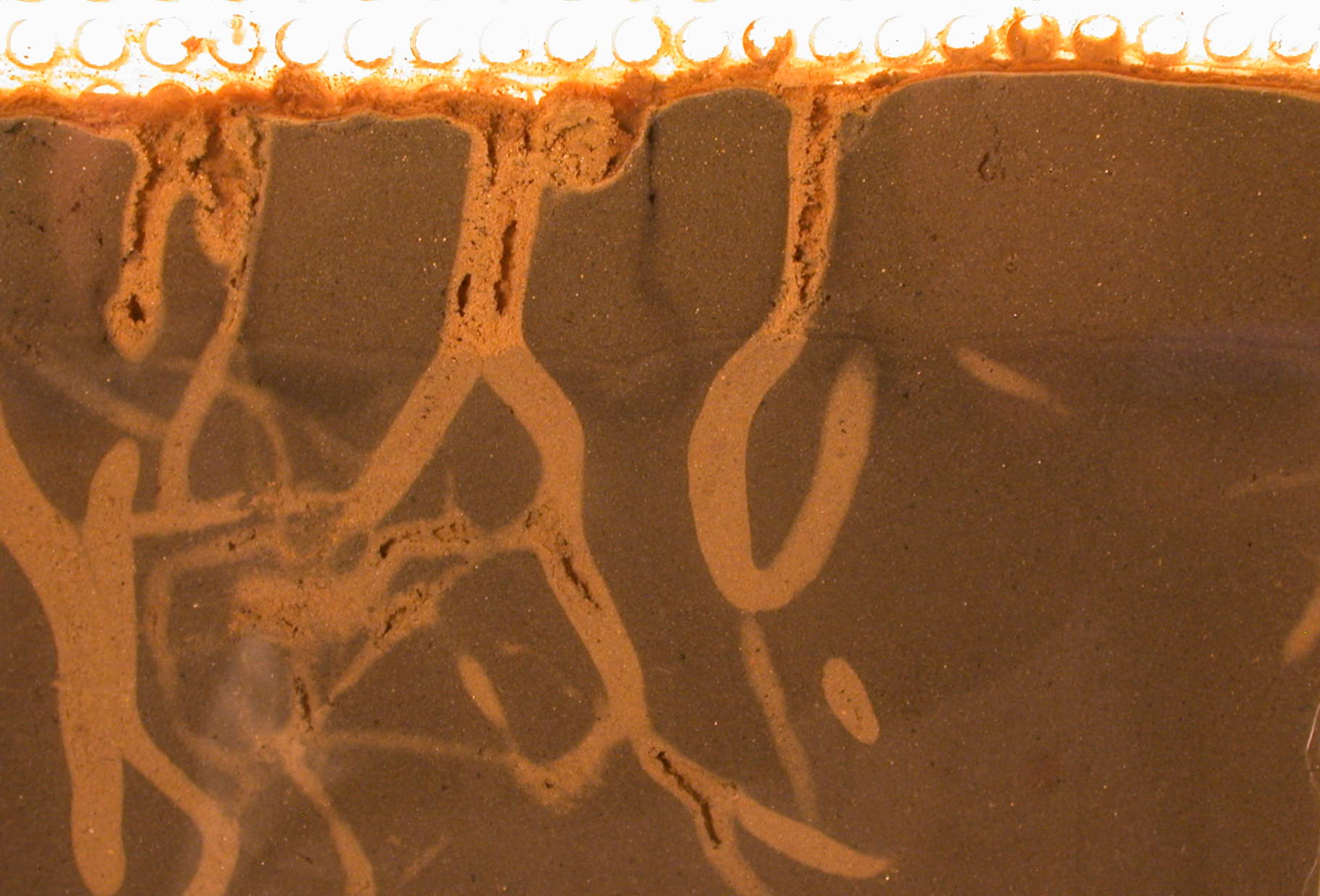
Figure: Oxidized chironomid burrows in lake sediments | Image: Jörg Lewandowski / IGB
Our topics in the framework of the department
The departmental core area "Landscape-waterscape interactions" is mainly addressed with research on the 2nd interface (catchment-lake interactions) and additionally with some research on the 1st interface (catchment-stream interactions). The departmental core area "Urban ecohydrology" is mainly addressed with research on the 1st interface (hyporheic zones in urban streams) and additionally with some research on the 2nd interface (lacustrine groundwater discharge in urban areas). The departmental core area "Aquatic-biotic coupling" is addressed with research on the 3rd interface which is created and maintained by burrowing macrozoobenthos.
The research group in February 2023 | Image: Birgit Maria Müller / IGB
Automatic water samplers help us to take surface water samples over longer periods of time. Here we investigate the retention of trace organic compounds in surface water and in the hyporheic zone of the side channel "Rechter Randgraben" of the River Erpe, Berlin/Brandenburg (Project Urban-Water Interfaces) | Image: Jörg Lewandowski / IGB

48-hour field campaign to investigate the influence of daily discharge fluctuations on the biogeochemical processes in the hyporheic zone (WHONDRS project) | Image: Jörg Lewandowski / IGB
Field lab at the wastewater-impacted River Erpe, Berlin/Brandenburg (Projects UWI and HypoTRAIN) | Image: Jörg Lewandowski / IGB
Flume experiments with sediments of River Erpe, Berlin/Brandenburg (Ecolab Birmingham, Project HypoTRAIN) | Image: Jörg Lewandowski / IGB
Fibre-optic distributed temperature sensing (fo-DTS) in the River Schlaube, Brandenburg (Project SMART) | Image: Jörg Lewandowski / IGB
Studying groundwater-stream interactions in the River Schlaube, Brandenburg (Project SMART) | Image: Jörg Lewandowski / IGB

The next generation of scientists (IGB Open day, Flume to visualize groundwater-surface water interactions) | Image: Nadja Neumann / IGB
Group members
Alumni
Cara Beume
Franziska Mehler geb. Pöschke


